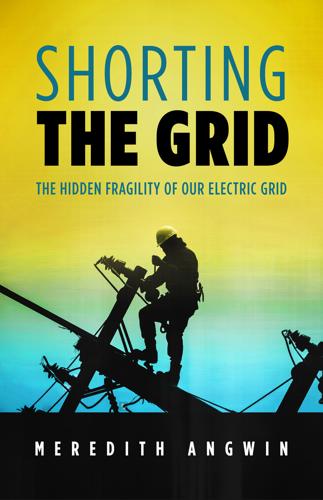
Shorting the Grid: The Hidden Fragility of Our Electric Grid
by
Meredith. Angwin
Published 18 Oct 2020
Gas is delivered through pipelines: it is just-in-time delivery. There is very little storage for gas at a power plant, though there is storage to feed the pipelines. But no matter how much storage can feed the pipelines, the pipelines can carry only a certain amount of gas at a given time. Since electricity is made and used instantaneously, and natural gas for power plants is delivered just in time for use, sometimes the two “just in times” don’t mesh, and that leads to trouble. New England winter and gas use POWER PLANTS RECEIVE natural gas through pipelines, a just-in-time delivery scenario. In New England, in summer, the pipelines can deliver enough gas for the power plants, even on a hot day with high electricity demand on the grid.
…
Mere ratepayers will never learn what “stakeholders” share with each other. No accountability: Nobody is accountable for the grid. A power-plant owner can run his power plant well or badly: it’s not his plant’s fault if the grid can’t get enough power. Just-in-time natural-gas plants can take over a grid, and just-in-time deliveries can fail in cold weather. It’s not the RTO’s problem to keep a mix of plants on the grid, for resilience. In RTO areas, generation utilities own power plants, and distribution utilities own power lines and substations. Distribution utilities still have regulated rates of returns and have to keep their lines and substations in good shape.
…
I think this sort of thing is what led Department of Energy Secretary Perry to think that something had better be done about the fuel-security situation on the grid. Perry is from Texas, and I think he probably has no particular problem with having lots of natural gas on the grid. “No gas!” is not likely to be his issue. Much of the Permian Basin (a major oil and gas resource) is in Texas. However, natural gas is just-in-time delivery. Perry was trying to ensure the security of the grid in bad weather, by rewarding plants that keep fuel on-site. Perry may have noticed that FERC was happy with complex formulas to keep oil on-site at a gas plant but was unwilling to reward plants that kept fuel on-site as a natural course of business.

Cyber War: The Next Threat to National Security and What to Do About It
by
Richard A. Clarke
and
Robert Knake
Published 15 Dec 2010
During that decade evangelical information-technology companies showed other corporations how they could save vast amounts of money by taking advantage of computer systems that could do things deep into their operations. Far beyond e-mail or word processing, these business practices involved automated controls, inventory monitoring, just-in-time delivery, database analytics, and limited applications of artificial-intelligence programs. One Silicon Valley CEO told me enthusiastically in the late 1990s how he had applied these techniques to his own firm. “Somebody wants to buy something, they go online to our site. They customize the product they want and hit BUY.
…
Our system notifies the parts makers, plans to ship the parts to the assembly plant, and schedules assembly and delivery. At the assembly plant, robotic devices put the product together and put it in a box with a delivery label on it. We don’t own the computer server that took the order, the parts plants, the assembly plant, or the delivery aircraft and trucks. It’s all outsourced and it’s all just-in-time delivery.” What he owned was the research department, the design team, and some corporate overhead. At companies like his, and in the U.S. economy in general, profitability soared. What made all of that possible was the deep penetration in the 1990s of information-technology systems into companies, into every department.
…
In the experiment, code-named Aurora, the test’s hackers made it into the control network from the Internet and found the program that sends rotation speeds to the generator. Another keystroke and the generator could have severely damaged itself. Like so much else, the enormous generators that power the United States are manufactured when they are ordered, on the just-in-time delivery principle. They are not sitting around, waiting to be sold. If a big generator is badly damaged or destroyed, it is unlikely to be replaced for months. Fortunately, the Federal Electric Regulatory Agency in 2008 finally required electric companies to adopt some specific cyber security measures and warned that it would fine companies for noncompliance up to one million dollars a day.

Covid-19: The Pandemic That Never Should Have Happened and How to Stop the Next One
by
Debora MacKenzie
Published 13 Jul 2020
Michael Osterholm is an epidemiologist who has studied the possible impacts of pandemics. He told me that now, a few factories in China make nearly all of these vital supplies, as the global industry takes advantage of low labor costs and economies of scale. This is efficient. Hospitals rely on constant, just-in-time deliveries of these items, too: keeping stocks costs money, so this is also efficient. During the early days of the Covid-19 pandemic when much of China was affected, there were fears deliveries would stop, either because China needed more of these things than usual or because factories or shipping might shut down as employees were quarantined.
…
Public transport collapsed, grocery stores emptied, hospitals ran minimal services, hazardous waste piled up, bodies went unburied. The government had to step in. A subsequent study predicted economic collapse in Britain if all road haulage, not just fuel deliveries, was shut down for only a week. Today, we all depend even more on just-in-time deliveries: if the trucks stop because drivers are locked down, or sick, or dead, or caring for sick family, cities will rapidly have no food, vehicles won’t have fuel, food in depots will rot. In the future, if deliveries depend more on automated systems, trucking may not remain as vulnerable—but the principle remains that if certain hub industries are paralyzed by loss of people, the impact can be far-reaching.

No Ordinary Disruption: The Four Global Forces Breaking All the Trends
by
Richard Dobbs
and
James Manyika
Published 12 May 2015
Based on our experience across sectors, a combination of project reprioritization, shortening of project life cycles, and tight project execution can deliver as much as a 10 to 25 percent reduction in spending and a 20 to 50 percent reduction in delays.47 A real estate company in the Middle East, for example, reduced cycle time by 30 percent for a $500 million tower project by taking advantage of lean management techniques—such as performance dialogues and war rooms—and prefabricating forms for beams and construction joints. These efforts allowed it to avoid $50 million in penalties for time overruns, while reducing the overall cost.48 When money becomes more expensive, not tying it up unnecessarily becomes more crucial. The just-in-time delivery processes pioneered by Asian manufacturers were, at root, efforts to avoid tying up capital unnecessarily in parts and supplies that would sit idle on factory floors. Today, Japanese and Korean automakers are increasingly adopting a “capital-light” approach to product design and processes.
…
See Labor market; Labor market gap Jumia, 84 Karp, David, 52 Kazakhstan, 116, 141 Kelly, Eron, 39 Kenya, 41, 85, 176, 197 Kickstarter, 47, 143–144 Kimberly-Clark, 68 Kiva, 47, 85, 143 Kohl, Helmut, 181 Kumasi, Ghana, 15–16, 23, 29 Kurzweil, Raymond, 6 Labor market globalization of, 77, 86, 158 growth rate, 60–61 retirees in, 63–64, 65–66, 160 trend break in, 10, 151 women in, 160, 183, 193–194 See also Talent Labor market gap, 149–164 adaptation to, 10, 156–164 from aging population, 7, 59 (table), 60–61, 64–66, 194–195 automation and, 151–152, 153 (photo), 153 (table) digital platforms and, 154, 158, 160–161, 162 disaggregation and, 161–162 government incentives to close, 193–194 government regulation to close, 194–195 interaction jobs, 152, 153 (photo), 153 (table) policy to close, 181–183, 193, 194–195 production jobs, 151–152, 153 (table), 155 recession recovery cycles and, 149–151 technological adoption and, 160–161 technological disruption and, 151–154 training to fill, 161, 162–164, 183, 196–197 transaction jobs, 152, 153 (table) university graduates and, 155–156, 157 (fig.), 158, 159 (table) See also Talent Land management, 117 (table), 121 (table), 122 Latin America connectedness ranks in, 81 (table) immigrant talent in, 77 labor market gap in, 163, 164 new consuming class in, 102 Latin American countries Argentina, 77, 81 (table), 113 (table) Bolivia, 77 Chile, 116, 195 Colombia, 164, 176 Mexico, 113 (table), 123, 191 Peru, 28 See also Brazil LG Electronics, 104–105, 109, 122 Life expectancy, 58, 60, 61 LinkedIn, 49 Localization future government centralization or, 191–192 goods and services customization and, 102–105 manufacturing, 27, 105 London, England, 29, 31–32, 143 Lyft, 47, 48, 154 Ma, Jack, 165 Mangalyaan (spacecraft), 3 Manufacturing agility in, 82–83 automation of, 151–152, 153 (table), 154 circular economy approach to, 123–125 commodity demand increase in, 114–116, 117 (table) cycle time reduction in, 141 economic center of gravity and, 17 energy efficiency in, 123 globalized new competitors in, 84 just-in-time delivery processes, 141–142 labor market gap in, 155 local, 27, 105 overruns, 141 for reuse and recycle, 123–125 3-D printing and, 35 (fig.), 37–38, 39, 45, 50, 60, 84 See also Automotive manufacturing industry Marketing to aging population, 66–68 to new consuming class, 105–107 Massachusetts Institute of Technology (MIT), 28, 155 Materials science, 34–36 McAfee, Andrew, 6 McKinsey Global Institute (MGI), 11 Media.

Peak Car: The Future of Travel
by
David Metz
Published 21 Jan 2014
This points to a better way of managing demand for road travel. Efficient road freight operators under contract with the supermarket chains for long distance transport between central depots and stores typically have to deliver within 30‑minute time slots or face a penalty—an example of what is known as ‘just in time delivery’. This they can achieve because they know the location and control the progress of each vehicle and understand where traffic congestion arises. I had the opportunity to ask a senior executive of a well‑known freight haulier to what extent unanticipated congestion affected performance. His memorable response was that it had less impact than unanticipated delays at customers’ premises.
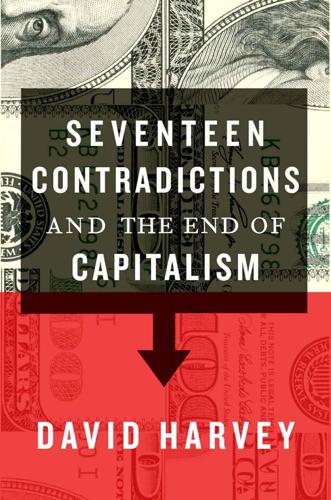
Seventeen Contradictions and the End of Capitalism
by
David Harvey
Published 3 Apr 2014
Capital’s immediate purpose is to increase productivity, efficiency and profit rates, and to create new and, if possible, ever more profitable product lines. When considering the trajectories of technological change, it is vital to remember that the software and the organisational forms are every bit as important as the hardware. Organisational forms, like the control structures of the contemporary corporation, the credit system, just-in-time delivery systems, along with the software incorporated into robotics, data management, artificial intelligence and electronic banking, are just as crucial to profitability as the hardware embodied in machines. To take a contemporary example, cloud computing is the organisational form, Word is the software and this Mac, upon which I write, the hardware.
…
It was the profitability of the steam engine makers rather than that of the different industries using steam power (for example, transport, cotton factories and mining) that mattered, though plainly the profitability of the one could not be achieved without that of the other. The search for ever-newer and better forms of not only the steam engine but also energy and power application quickly followed. The search for generic technologies that could be applied almost anywhere – in recent years think of fields such as computers, just-in-time delivery systems and theories of organisation – became important. A vast business of invention and innovation catering to all and sundry sprang up, providing new technologies of consumption as well as of production, circulation, governance, military power, surveillance and administration. Technological innovation became big business, not ‘big’ necessarily in the sense of some vast consolidated corporation (though examples of that sort now abound in fields like agribusiness, energy and pharmaceuticals) but ‘big’ in the sense of multiple firms, many of them small-scale start-ups and venture enterprises, exploring innovation for innovation’s sake.

How the World Ran Out of Everything
by
Peter S. Goodman
Published 11 Jun 2024
Here was a key part of the explanation for why the halting of factories in China quickly yielded shortages of parts everywhere else, and why Walker’s company found itself fretting over its ability to secure needed materials. For decades, executives had run businesses in the thrall of an obsession with Just in Time delivery. They had concluded that stashing extra parts and products in warehouses as a hedge against trouble was a poor use of their money. Just in Time was a sensible concept that had been mastered by Ford’s formidable competitor, Toyota, one of the most successful companies in the history of commerce.
…
Increased competition, lower profitability, and the extreme dilution of union power all combined to make drivers vulnerable. They accepted longer routes for lower pay. By the year 200027, long-haul drivers were twice as productive while earning only 60 percent of the pay they had brought home prior to deregulation. They were central components of the Just in Time delivery machine, ferrying a steady flow of product wherever it was needed. Yet they were managed as if their own time was devoid of value. All that mattered was the line item on the spreadsheet showing how many miles they had traveled. By 2018, median wages for truck drivers had dropped by more than one-fifth28 since deregulation, and by half in some parts of the country.
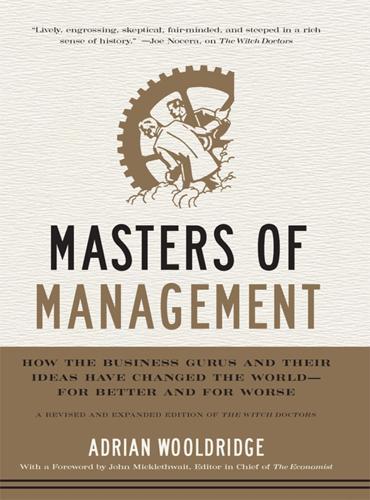
Masters of Management: How the Business Gurus and Their Ideas Have Changed the World—for Better and for Worse
by
Adrian Wooldridge
Published 29 Nov 2011
Iwasaki donated some of her royalties to the Japan Drucker Workshop and the Peter Drucker and Mastoshi Ito Graduate School of Management. But the novel did more than this: it promoted a salutary debate about the business habits of a country that, thanks in part to Drucker, had shaken up the business world in the 1960s and 1970s with a succession of management innovations, such as “lean production” and “just-in-time delivery,” but has been locked in a recession for two decades. Should Japanese companies set themselves clearer objectives rather than wallowing in consensus? And should they adopt clearer structures rather than sprawling into dozens of businesses? Five years after his death, Drucker still mattered.
…
When the first operation is done, the second patient is already in place. These three business innovations are remarkable. But something even more fundamental is going on: business innovation in the emerging world has arguably gotten to the point where all the individual advances add up to more than the sum of their parts. Just as Japan’s quality circles and just-in-time delivery were part of a new system called “lean production,” so the emerging world’s reverse innovation and frugal production are part of a new approach to management. This new management paradigm pushes two familiar ideas beyond their previous limits: that the customer is king, and that economies of scale can produce radical reductions in unit costs.

The Default Line: The Inside Story of People, Banks and Entire Nations on the Edge
by
Faisal Islam
Published 28 Aug 2013
At the Central Bank itself, tense meetings between international financiers, American management consultants, British Treasury advisers and Cypriot bankers suddenly broke off. Four very large green juggernauts laden with euros had arrived from the European Central Bank, just hours before Cyprus’s banks were due to reopen. An historic just-in-time delivery. That afternoon a Boeing 767 cargo plane in the livery of Maersk Star Air had been spotted amidst a crowd of smaller private jets parked at the end of the runway at Larnaca airport. Flight logs record that the Boeing 767, registration OY-SRH, had flown from Cologne to Munich in the early hours, and then, via Athens, to Larnaca.
…
This is the first time since the Second World War that the United Kingdom has been able to absorb a very large depreciation of its currency without domestically generated inflation wage costs picking up. I think that’s an achievement for monetary policy and I think the MPC [Monetary Policy Committee of the Bank of England] can be rightly proud of that.’ I first saw this dynamic at first hand at the Honda factory in Swindon in 2009. Japanese just-in-time delivery stretched to their employment practices. A collapse in demand for cars was transmitted immediately around the world and led to them cutting down on working time as much as on steel. Workers accepted a 3 per cent pay cut for workers and 5 per cent for management in the place of compulsory redundancies, to cope with the slump in world trade after the Lehman collapse.

Survival of the Richest: Escape Fantasies of the Tech Billionaires
by
Douglas Rushkoff
Published 7 Sep 2022
He paused, and sighed, “I don’t want to be in that moral dilemma.” That’s why J.C.’s real passion isn’t just to build a few isolated, militarized retreat facilities for millionaires, but to prototype locally owned sustainable farms that can be modeled by others and ultimately help restore regional food security in America. The “just-in-time” delivery system preferred by agricultural conglomerates renders most of the nation vulnerable to a crisis as minor as a power outage or transportation shutdown. Meanwhile, the centralization of the agricultural industry has left most farms utterly dependent on the same long supply chains as urban consumers.
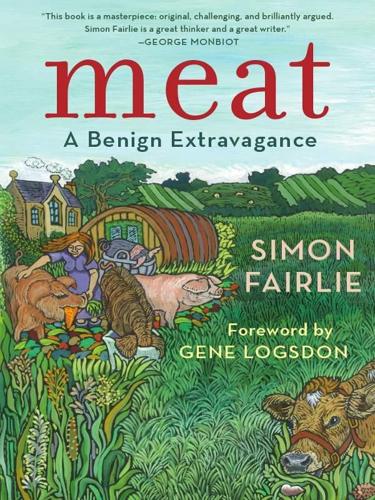
Meat: A Benign Extravagance
by
Simon Fairlie
Published 14 Jun 2010
Assuming for simplicity, that the latter two effects compensate each other, the total annual meat transport-induced CO2 emission would be in the order of 800–850,000 tonnes of CO2. 62 In other words, ‘for simplicity’, the FAO has omitted to take into account all surface transport and airfreight anywhere in the world – all the cattle trucks and milk tankers, the lorries loaded with hay and straw, the vets’ visits to farms and the relief milkers’ trips to work, the deliveries of feed and fertilizer, the Spanish artics and the Tesco vans, the just-in-time deliveries of McDonalds burgers and M & S chilled beef vindaloo – all of this is discounted in order to cancel out a modest overestimate made in its calculation about international shipping. Sea transport represents a minor part of food transport emissions. The UK imports around 40 per cent of its food, but international shipping represents just 13.5 per cent of transport emissions, whereas road transport constitutes 73 per cent and aviation 13.5 per cent.63 It is hard to pin down what other assumptions the FAO may have made to ‘simplify’ their calculations.
…
The FAO analysis accounts for CO2 from tractors, fertilizers, on-farm processing and a miniscule amount for transport – but it doesn’t register all the high impact baggage that tends to come with intensive farming, in order to accommodate its so called economies of scale: 4x4s, concrete yards, paved roads, electric lights, air conditioning, refrigeration, burglar alarms, slaughterhouse costs, animal waste disposal, health and safety measures, carcase incineration, livestock registration and identification, product tracking, computerized accounts, conferences, packaging, advertising, middlemen, retail chains, just-in-time delivery, supermarket journeys, processing waste disposal, domestic waste disposal, journeys to work etc. You don’t buy into the intensive farmers’ club with just a tractor and sack of fertilizer – intensive farming brings with it all the paraphernalia of an industrialized urbanized lifestyle, which the peasant in a local economy for the most part manages without.

The Tylenol Mafia
by
Scott Bartz
Published 21 Sep 2011
Officials never disclosed the name of the distributor that delivered the poisoned Tylenol capsules to Central DuPage Hospital, but they did spend a great deal of time questioning employees at the largest distributor of Tylenol to hospitals in the Chicago area - the Louis Zahn Drug Company. 19 ________ The Louis Zahn Drug Company When Central DuPage Hospital converted its pharmacy to a unit-dose system in 1974, it also contracted with a local distributor to manage its inventory and provide frequent deliveries of drugs and other products to its pharmacy. Distributors make “just in time” deliveries to hospital pharmacies, usually several times per week. This system allows pharmacies to keep very low inventory levels and thus reduce costs. The distribution company that gained the pharmacy-service-provider contract for Central DuPage Hospital is the same distribution company that delivered the cyanide-laced Extra Strength Tylenol capsules to the hospital’s pharmacy.
…
Bottles of Extra Strength Tylenol capsules were rarely delivered to retail customers by the full case of 72 bottles. Rather, they were delivered in multiples of six Tylenol bottles or one Tylenol bottle, depending on how the picking system was set up. Retail stores and hospital pharmacies received just-in-time deliveries of drugs and other products. Most retail stores ordered just enough Tylenol bottles to cover sales until the next shipment arrived, typically, no more than a week later. Managers at Jewel stores told NBC-News that they were selling one or two bottles of Extra Strength Tylenol capsules per day.

Thinking in Systems: A Primer
by
Meadows. Donella
and
Diana Wright
Published 3 Dec 2008
The hormone diverts some of the cow’s metabolic energy from other bodily functions to milk production. (Cattle breeding over centuries has done much the same thing but not to the same degree.) The cost of increased production is lowered resilience. The cow is less healthy, less long-lived, more dependent on human management. • Just-in-time deliveries of products to retailers or parts to manufacturers have reduced inventory instabilities and brought down costs in many industries. The just-in-time model also has made the production system more vulnerable, however, to perturbations in fuel supply, traffic flow, computer breakdown, labor availability, and other possible glitches

How PowerPoint Makes You Stupid
by
Franck Frommer
Published 6 Oct 2010
The hierarchical and bureaucratic model was criticized and replaced by a type of organization in which participants were more autonomous, multi-specialists, participating in decision making. The Japanese Toyota model played a significant role, bringing to antiquated Taylorism the new charms of constant improvement, “just in time” delivery, and “zero delay.” This was the time of the “lean, open, and stable company”6—“lean” because to be responsive, the company could no longer operate with multiple hierarchical ladders; “open” in the sense that organizations had to be streamlined and there should be no hesitation in relying on subcontractors; and “stable” because the organization had to be carefully planned.

Money Mavericks: Confessions of a Hedge Fund Manager
by
Lars Kroijer
Published 26 Jul 2010
It was amazing how different our worlds were. The CEO of Bure, Lennart Svantesson, was a real hands-on guy who relished and excelled at sorting out operational issues facing the portfolio companies. His struggles involved meeting delivery dates and managing working capital while facing down the unions. He even used the term ‘just-in-time delivery’ which was the first time I had heard the expression since business school. By contrast, he clearly did not know what to make of me. At 33, I was too young to have come up through the ranks of an operating business to suddenly appear on his list of leading shareholders. He knew that I ran my own investment firm and therefore he did not have to look over my shoulder to see who was really making the decisions, but he also gathered that I had not grown up with wealth.
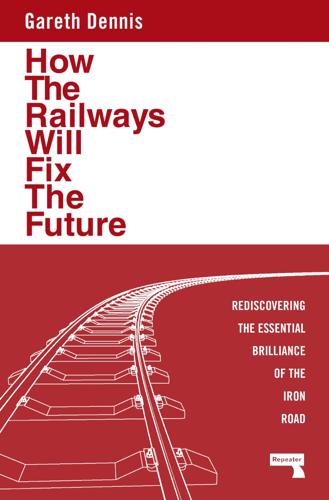
How the Railways Will Fix the Future: Rediscovering the Essential Brilliance of the Iron Road
by
Gareth Dennis
Published 12 Nov 2024
They are public bodies that pay dividends to shareholders — I don’t think I need to expand on the morality or otherwise of this. As a complex system of systems, the railway requires an enormous range of bits to keep it working, and ensuring a ready, cost-effective supply of these is crucial. Modern supply chains, with their emphasis on just-in-time delivery and minimal warehousing, have been exposed as less than robust by COVID-19, by conflict and by container vessels Austin Powers-ing themselves in the Suez Canal. Any strategic plan must take account of this and consider in-sourcing the supply of these bits where possible. Lots of the bits will be made by companies that do not fall under the “can it go bust?”
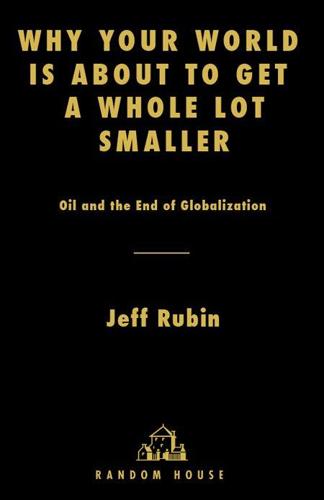
Why Your World Is About to Get a Whole Lot Smaller: Oil and the End of Globalization
by
Jeff Rubin
Published 19 May 2009
Because the cheap-oil subsidy that makes Norwegian salmon affordable is about to disappear. And as it does, your world is about to get smaller—much, much smaller. To get that salmon from the ocean to your plate takes a ridiculous amount of energy. Think of the fuel for the fishing boats, container ships and just-in-time delivery trucks; the energy to freeze and process the fish, to sell it in a supermarket (retail stores use almost as much energy per square foot as factories do, just on heating, cooling and lighting). We invest a lot more energy to get that salmon than we get out of it when we eat it, which in itself makes the fish a bad energy deal.
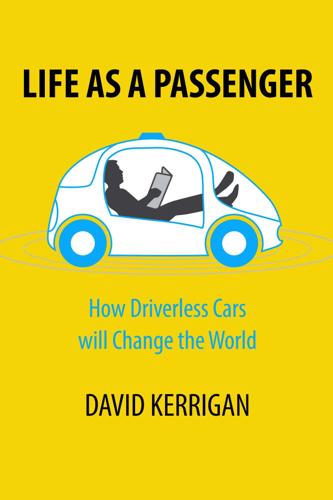
Life as a Passenger: How Driverless Cars Will Change the World
by
David Kerrigan
Published 18 Jun 2017
Will consumers who currently do their weekly grocery shop send a car to pick it up for them using some future Instacart-style service? Will shoppers seek to return to city centres if driverless cars make them more pedestrian friendly, at the expense of out of town malls? Perhaps the growth of just in time deliveries (via drones[246] or robots), anticipatory shipping[247] and re-order technologies such as Amazon Dash[248] will change the nature of shopping patterns regardless of driverless cars? Obvious changes to the relative importance of gas stations in a world of driverless cars (and likely a world of more electric vehicles) will be accompanied by changes in the sales for products that sell in significant volumes as impulse or attached purchases.

Social Life of Information
by
John Seely Brown
and
Paul Duguid
Published 2 Feb 2000
Page 94 Perfecting Process It is perhaps significant that many of the celebrated cases of business process reengineering come from a fairly narrow band of operations. Procurement, shipping and receiving, warehousing, fulfillment, and billing are favorites. These generally account for the most impressive results, with inventories transformed into just-in-time delivery, fulfillment and billing accomplished in days rather than weeks. In these areas of work, processes are relatively well defined. They usually have clearly measurable inputs and outputs. And, as we might expect from a process-oriented view, they emphasize a linear view of how organizations work.
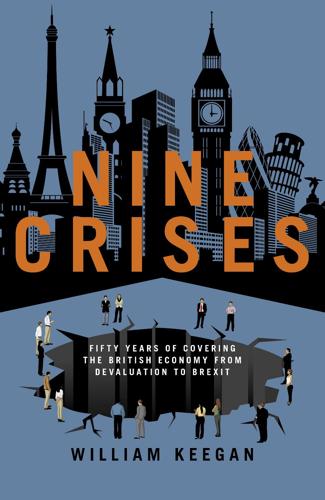
Nine Crises: Fifty Years of Covering the British Economy From Devaluation to Brexit
by
William Keegan
Published 24 Jan 2019
One is geopolitical rather than economic: it seems unwise, to put it mildly, to try to unhook ourselves from the rest of Europe when the United States, under Donald Trump, has declared a trade war on the rest of the world and Europe is very concerned about a threat from President Putin’s Russia. The second concern is obviously economic: we have spent forty-five years being integrated into the wider European economy and in effect we have become an economic region of the EU. So much industrial production is geared to intricate supply lines and what is known as ‘just in time’ delivery systems. I suspect that a lot of the people who voted for Brexit do not realise that many of the things they take for granted, like the ability to buy fruit and vegetables delivered to their supermarkets overnight from France, Spain and other European countries, would be put at risk by the kind of customs restrictions that would be imposed by Brexit.

The Enigma of Capital: And the Crises of Capitalism
by
David Harvey
Published 1 Jan 2010
This typically produces a perpetual stream of innovations in technologies and organisational forms simply because those capitalists with more efficient, effective and productive labour processes gain higher profits than the rest. The quest for greater efficiency actually encompasses all aspects of the circulation of capital, from the procuring of labour supplies and means of production (hence the supply-chain structure of just-in-time delivery from subcontractors to the modern corporation) through to efficient and low-cost marketing strategies (the Wal-Mart syndrome). Capitalist entities, from individual entrepreneurs to vast corporations, are therefore forced to pay close attention to organisational and technological forms and are always on the look-out for those innovations that yield them excess profit, at least for a time.

What Algorithms Want: Imagination in the Age of Computing
by
Ed Finn
Published 10 Mar 2017
These companies operate in what design entrepreneur Scott Belsky calls the “interface layer,” using appealing design to clarify and rationalize messy aspects of cultural life into simple, dependable choices.32 The Interface Economy If Zynga and its cohort of game-makers have found ways to extract labor value from entertainment, the new wave of interface layer companies is reframing labor as a kind of entertainment, adopting the optimistic framing of the “sharing economy.” Their rhetoric relies on the notion of technological collaboration and just-in-time delivery: taking advantage of unused resources like empty seats in cars, unused rooms in houses, and so forth. But all of these interactions are grounded in the mediating computational layer that manages ad hoc logistics, matches buyers and sellers of services, and structures access to platforms through carefully constructed interfaces.
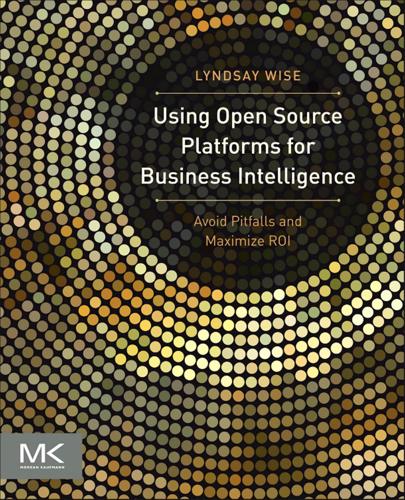
Using Open Source Platforms for Business Intelligence: Avoid Pitfalls and Maximize Roi
by
Lyndsay Wise
Published 16 Sep 2012
Even though there isn’t a single solution that will meet the requirements of everyone within the organization, fine-tuning a solution to meet the needs of most will eliminate the need for rework later on.1 Applying this directly to technical considerations means identifying all of the factors that affect the business from a technical standpoint. For example, manufacturers require the ability to manage 1 http://mimiandeunice.com/ Evaluating the current IT infrastructure 145 parts how many exist in what place at any given time, defective parts, just-in-time delivery, supply chain and parts management, as well as placements in warehouses before use. For e-commerce and retailers, similar requirements exist. Not only do products need to be tracked, but sales trends and customer preferences need to be identified to make sure that consumers have positive experiences to induce them to become and/or remain customers.

Bold: How to Go Big, Create Wealth and Impact the World
by
Peter H. Diamandis
and
Steven Kotler
Published 3 Feb 2015
Turning our attention to automation—which is essentially the process of gathering all the data collected by the IoT, turning it into a series of next actions, and then, without human intervention, executing those actions. Already, we’ve seen the first wave of this in the smart assembly lines and supply chains (what’s technically called process optimization) that have enabled things like just-in-time delivery. With the smart grid for energy and the smart grid for water—what’s technically called resource consumption optimization—we’re seeing the second wave. Next up is the automation and control of far more complex autonomous systems—such as self-driving cars. There are even further opportunities in finding simpler ways to connect decision makers to sensor data in real time.

The Emperor's New Road: How China's New Silk Road Is Remaking the World
by
Jonathan Hillman
Published 28 Sep 2020
The ship anchored frustratingly close to the coast and waited for better weather. I asked the chef how long it would be. “Only mother nature knows,” he laughed. We eventually pulled into Alat, a port near Baku, around two a.m. the next morning. From dock to dock, the trip took about thirty-two hours. That is hardly a revolution in today’s world of just-in-time delivery, but it could become an improvement over the status quo, especially if backers of the new port can deliver their promise of an eighteen-hour crossing. Even greater gains could be achieved by reducing the waiting time on land. But not all inefficiencies are accidental or easily fixed. The art of the middleman is turning uncertainty into advantage.

Chaos Kings: How Wall Street Traders Make Billions in the New Age of Crisis
by
Scott Patterson
Published 5 Jun 2023
A single container ship foundering in the Suez Canal disrupts supply chains worldwide. “The networks that connect us can amplify any shocks. A breakdown anywhere increasingly means a breakdown everywhere,” Bar-Yam observed. Corporations solely motivated by profit can make matters worse by optimizing their operations to the fullest extent possible. Just-in-time delivery can be very profitable, as long as supply chains work as planned. When they don’t, the whole chain can fracture as slowdowns at choke points ramify through the system. Imagine an entire global economy based on optimized supply chains (and food chains), all backed and managed by computer-driven financial markets increasingly susceptible to extreme events.

Cheap: The High Cost of Discount Culture
by
Ellen Ruppel Shell
Published 2 Jul 2009
Unloaded by crane from boat to truck to train to barge, no backs were wrenched, no whiskey or watch or gold gone missing. Today, a skeleton crew of a dozen hands can navigate a vessel freighted with up to six thousand containers, each the size and shape of a railroad car. Containers made shipping fast and predictable, enabling the just-in-time delivery system that retailers have come to depend on. In the estimations of some economists, containers made the transport of goods so cheap as to be essentially free. They certainly help make many things from China unbelievably cheap. Big Boxes, Category Killers, Bargain Basements, and Dollar Stores all owe their existence to fast boats from China and the containers they carry.
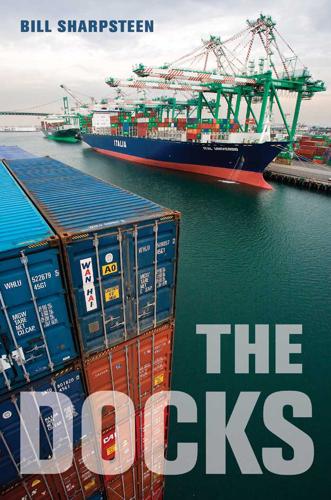
The Docks
by
Bill Sharpsteen
Published 5 Jan 2011
Geraldine Knatz, executive director of the Port of Los Angeles, tells me about cargo coming off a Maersk ship 155 156â•… /â•… The Shipper that was delayed at the port because of a crane fire that held up the discharge operation by a measly thirteen hours. But that was all it took to miss the train leaving for Dallas, where the containers filled with items for a department store chain’s Labor Day sale were headed for further distribution in the Midwest. Because the shipment had been scheduled for just-in-time delivery, there was no way to catch up. The products were too late for the store sales, and the corporate office had to yank the sale ads before they were published. And while it’s entirely possible that no one in Kansas City cares about what happens at the port, as Knatz puts it, “If I lived near that store and I was going to get my kids’ school clothes right before Labor Day and I went in there and they didn’t have the school uniforms, I would have really been pissed off.”
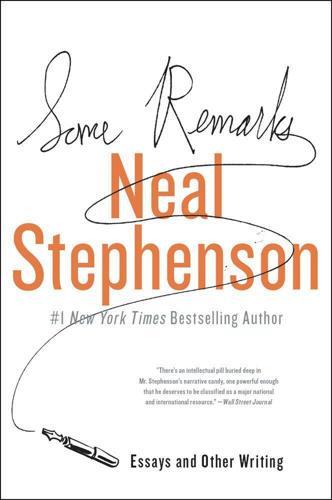
Some Remarks
by
Neal Stephenson
Published 6 Aug 2012
In addition to running their undercover operation in the sidewalk stand, they are targeting a number of operations in other countries, which probably provides a foretaste of what’s going to happen in mainland China a few years down the road. Most East Asian countries have sort of a stolen intellectual property shopping mall where people sit all day in front of cheap computers swapping disks, copying the software while you wait—the vaunted just-in-time delivery system. After a few of these got busted, many switched to a networked approach. One guy in Taiwan is selling a set of 7 CD-ROMs containing hundreds of pirated programs. He has no known name or address, just a pager. Taiwan, the most technologically advanced part of Greater China, makes a lot of PCs, all of which need system software, so there the name of the game is counterfeiting, not pirating.

Unfinished Business
by
Tamim Bayoumi
As the reality of lower volatility came to be accepted, the debate moved to explaining this moderation. Three main explanations were put forward: structural changes in the US economy, good luck, or better monetary policy. Investigators generally placed some weight on structural changes coming from the adoption of “just in time” delivery as a result of the information technology revolution. The timing worked, as such techniques were introduced in the early 1980s. In addition, the fall in output volatility was accompanied by a reduction in the variability of production relative to sales, consistent with the view that firms were able to use technology to better synchronize production with the demand for their goods.

Sandworm: A New Era of Cyberwar and the Hunt for the Kremlin's Most Dangerous Hackers
by
Andy Greenberg
Published 5 Nov 2019
Jeffrey Bader, president of a Port Newark–based trucking group, the Association of Bi-State Motor Carriers, estimates that the unreimbursed cost for trucking companies and truckers alone was in the tens of millions. “It was a nightmare,” Bader said. “We lost a lot of money, and we’re angry.” The wider cost of Maersk’s disruption to the global supply chain as a whole—which depends on just-in-time delivery of products and manufacturing components—is far harder to measure. And, of course, Maersk was only one victim. Only when you start to multiply Maersk’s story—imagining the same paralysis, the same serial crises, the same grueling recovery—playing out across dozens of other NotPetya victims and countless other industries does the true scale of Russia’s cyberwar crime begin to come into focus.
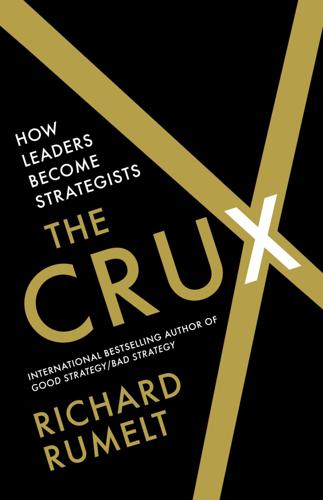
The Crux
by
Richard Rumelt
Published 27 Apr 2022
Pandemic studies will all call for more research on virology, and international pandemic studies will call for more money from rich to poor nations. And despite the dismal subject, they remain strangely upbeat. Note that the quote above does not say that the United States or Oregon should stock up on masks, gloves, or drugs that we have been buying on just-in-time delivery from China and other foreign suppliers. An honest scenario analysis would not wax eloquent about global coordination but predict closed borders, restricted travel, and collapsing supply chains. It would not just mention “obedience to protocols.” It would lay out the conditions that might warrant forced obedience versus those that permit a modicum of individual freedom.
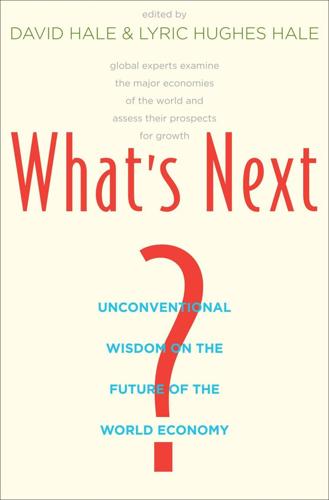
What's Next?: Unconventional Wisdom on the Future of the World Economy
by
David Hale
and
Lyric Hughes Hale
Published 23 May 2011
Lessons learned, we will create greater long-term stability. A gradual economic rebalancing will take place. Inexorable trends, such as outsourcing of US manufacturing to China, will reverse themselves over time. In fact, that has already begun to happen. Concerns over logistics costs, rising wages in China, and productivity issues such as just-in-time delivery have now given US companies an edge. US manufacturing has made a gradual recovery, which in turn will create more jobs. The unanswerable question is when. Many of our contributors have bravely tried to answer this question. They have ably presented their knowledge and experience and have offered their assumptions for debate with the reader.

Exponential: How Accelerating Technology Is Leaving Us Behind and What to Do About It
by
Azeem Azhar
Published 6 Sep 2021
I use the term in a slightly different context, referring to the overall breakdown of the thesis that technology necessarily enables single large global markets, mediated by a set of common rules. 4 Philip Garnett, Bob Doherty, and Tony Heron, ‘Vulnerability of the United Kingdom’s Food Supply Chains Exposed by COVID-19’, Nature Food, 1(6), 2020, pp. 315–318 <https://doi.org/10.1038/s43016-020-0097-7>. 5 Alex Lee, ‘How the UK’s Just-in-Time Delivery Model Crumbled under Coronavirus’, Wired, 30 March 2020 <https://www.wired.co.uk/article/stockpiling-supermarkets-coronavirus> [accessed 11 September 2020]. 6 UBS, The Food Revolution, July 2019 <https://www.ubs.com/global/en/ubs-society/our-stories/2019/future-of-food/_jcr_content/mainpar/toplevelgrid_1749059381/col1/linklist/link.1695495471.file/bGluay9wYXRoPS9jb250ZW50L2RhbS91YnMvZ2xvYmFsL3Vicy1zb2NpZXR5LzIwMTkvZm9vZC1yZXZvbHV0aW9uLWp1bHkucGRm/food-revolution-july.pdf>. 7 ‘Growing Higher – New Ways to Make Vertical Farming Stack up’, The Economist, 31 August 2019 <https://www.economist.com/science-and-technology/2019/08/31/new-ways-to-make-vertical-farming-stack-up> [accessed 4 August 2020]. 8 ‘World’s Biggest Rooftop Greenhouse Opens in Montreal’, Phys.org, 26 August 2020 <https://phys.org/news/2020-08-world-biggest-rooftop-greenhouse-montreal.html> [accessed 5 September 2020]. 9 Elizabeth Curmi et al., ‘Feeding the Future’, Citi Global Perspectives and Solutions, November 2018 <https://www.citivelocity.com/citigps/feeding-the-future/> [accessed 18 March 2021]. 10 Joel Jean, Patrick Richard Brown and Institute of Physics (Great Britain), Emerging Photovoltaic Technologies (Bristol, UK: IOP Publishing, 2020), pp. 1–5 <https://iopscience.iop.org/book/978-0-7503-2152-5> [accessed 12 October 2020]. 11 Brendan Coyne, ‘Vehicle-to-Grid: Are We Nearly There Yet?’
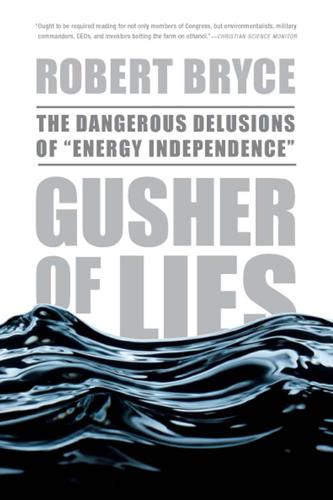
Gusher of Lies: The Dangerous Delusions of Energy Independence
by
Robert Bryce
Published 16 Mar 2011
In mid2007, Michael Harter, the chairman of the Tulsa Welding School, the largest welding school in the U.S., told me that there are “3 to 10 job opportunities” for every welder who graduates from his school.73 The backdrop for all of these challenges is the fact that the industry has little spare production capacity. For watchers of global business, that fact should not be a surprise. The oil industry has simply adopted some of the strategies of other major industries that use just-in-time delivery systems. In every industry, spare capacity of any type (manufacturing, power generation, consumer goods) is expensive. In order to stay competitive, companies are providing only as much production capacity as is needed by their customers at any given time. They meet the demands of their customers and they do it just in time.

The Long Boom: A Vision for the Coming Age of Prosperity
by
Peter Schwartz
,
Peter Leyden
and
Joel Hyatt
Published 18 Oct 2000
TliE qfobAl JNfoRMATiON JNfRASTRUCTURE led TO A "qUss pipEliNE," whERE The MOVEMENT of All PARTS ANd psoducTS ANd pEople could bE closely TRAckEd Th«ouqh EVERY sTAqe of pRoducriON, AbNq WlTh ThAT fltNdAMENTAl cliANqE JN COMMUNICATIONS, JN MOViNq INfORMA- TiON, CAME A biq IEAP foRWARd IN woviNq Thtwqs, A NEW qewERATiON of VERY IAST fREiqhTERS ANd lARqe CARqo pUwes bEEfed up Tk CARRyiNq CAPACITY white kEEpiwq TRANSPORT COSTS low, IN 2005, A NEW cUss of supERfREiqhTCR T!<AT could CARRY EVEN bulk CARQO, likE W^EAT, WENT INTO SERVJCE, CUTTINq lllE TIME foR TRANSPORT fROM T^E EAST COAST of AE UNlTEd STATES TO EUROPE ffiOM TEN dAyS TO T^REE. MANAqERS BECAME Much MORE efficiENT wi?h jusT'iN'TiME dEliveRiEs of EVERYThiNq fRow RAW MATERIA! TO polished pRoducis, Awd AvoidiNq Niqh INVENTORIES which WERE All COST ANd liwlE VAluE. IN AddmoN, ih£ ENTIRE wofild could bE usEd TO qer The besT pRices ON supplies,- NO BUSINESS OR CONSUMER WAS TRApped IN A loCAlilEd MARkET. IN ThE EARly iNdusTRiftl ECONOMY, All MAJOR PARTS supptas foR A DETROJT AU' TOMAkER hAd TO be locAl.

The Innovation Illusion: How So Little Is Created by So Many Working So Hard
by
Fredrik Erixon
and
Bjorn Weigel
Published 3 Oct 2016
This was a boon for the economy. Logistics is a general purpose industry and its own improvements have direct consequences for innovation and competition in other sectors. The logistics revolution in the 1980s was critical for the growth of lean production, an important process innovation that required just-in-time delivery of many source products and components. It provided companies with many new opportunities for where to start or grow businesses, and ways to reach consumers. Market deregulation helped to accelerate the diffusion of new technologies, making it easier for a company to take an innovation to market and for a user to adopt it.35 Moreover, changes in product market regulation reduced the capacity of companies to use market power such as first-mover advantage to limit innovation competition or to block markets to new entrants.36 Even in markets that have become more concentrated in recent phases of globalization, the spirit of competition brought by deregulation has been maintained and continues to limit the role of first-mover advantage.
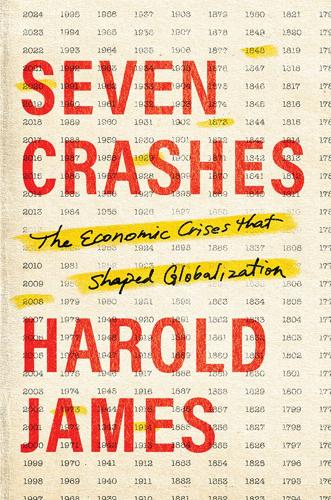
Seven Crashes: The Economic Crises That Shaped Globalization
by
Harold James
Published 15 Jan 2023
There is thus increased wastage at a time of general scarcity, and the shortages are never solved, short of a collapse of the planning system as a whole. The anxieties of consumers are exactly mirrored in the calculations of producers. Suppliers indulge in the same kind of planning with alternatives and making the second-best. If manufacturers are not any longer certain that just-in-time delivery of parts will succeed, they need to build up extensive stockpiles. They need to have larger warehouses in consequence, and that too adds to the pressure on construction and the resources—labor, supplies—required. All these alterations add substantially to the costs of production, and then get inevitably reflected in new pricing decisions.

The Content Trap: A Strategist's Guide to Digital Change
by
Bharat Anand
Published 17 Oct 2016
The core insight was not just to reduce the number of journalists but to spread their output over time. It was reminiscent of Walmart’s strategy to spread warehouse costs across store clusters. Planned journalism resulted not only in fewer journalists but in greater productivity. Journalists could write more and better. Munck spoke of the contrast: “Just-in-time delivery resulted in more mistakes, worse designs, less flexibility, loss of editorial control, higher costs, and staff working late. And the news was still old.” In contrast, by planning ahead, “you have more time, you do better research, you do more investigative journalism, you can get all the graphics and rich multimedia that you can’t get when a story comes up five minutes before deadline.”

Ghost Fleet: A Novel of the Next World War
by
P. W. Singer
and
August Cole
Published 28 Jun 2015
Marine Corps put the garage-door opener back in the plastic sandwich bag and shoved it into the cargo pocket on her pants. Nothing could go to waste in this kind of war. It was all so different from any of the combat she had seen in Yemen from the pilot’s seat of an MV-22K Osprey gunship. Here everything itched, everything rusted, and everything had to be scavenged. There was no just-in-time delivery of whatever ammunition or spare part you needed. And instead of government-issue combat footwear, they fought in sandals and running shoes, the group being made up of a few escapees from the captured bases and those who’d been lucky enough to be on leave the day of the attack. Between the dirty civilian clothes and the tactical playbook they were cribbing from, the insurgents quickly realized they were becoming the very bastards they’d spent most their professional military careers fighting.

The Age of Em: Work, Love and Life When Robots Rule the Earth
by
Robin Hanson
Published 31 Mar 2016
Because of learning and increased competitive pressures, we should expect em firms to use more of these good management practices, relative to firms of today. These practices include performance-based rewards and job-placement, demanding but attainable goals, managers evaluated on attracting and retaining talent, regular equipment maintenance, thorough analysis of failures, clear job descriptions, just-in-time delivery, tracking production by order, pricing orders based on production costs, and frequent and detailed tracking of inputs, outputs, and performance. Many other business practices today are suspected of being inefficient, even if the case against them isn’t quite as strong. We should also (more weakly) expect these practices to decline in em firms, because of continued firm learning and increased competitive pressures.

Connectography: Mapping the Future of Global Civilization
by
Parag Khanna
Published 18 Apr 2016
*2 As the Yale political scientist Bruce Russett has demonstrated, conflict is highest in regions such as the Middle East and Central Asia where there is low intra-regional trade and despotic rule. *3 The unoriginal name BCIM (Bangladesh, China, India, Myanmar) is an acronym arranged to avoid sounding like the ICBM missile. *4 Toyota’s twin innovations of simplifying the number of components and accelerating toward just-in-time delivery ushered in a new era of lean management in global supply chains. But since the Taiwan earthquake in 1999 and the Japanese tsunami of 2011, companies learned not to over-concentrate the production of critical components in a single geography that, if suddenly lost, would send shock waves through the system.
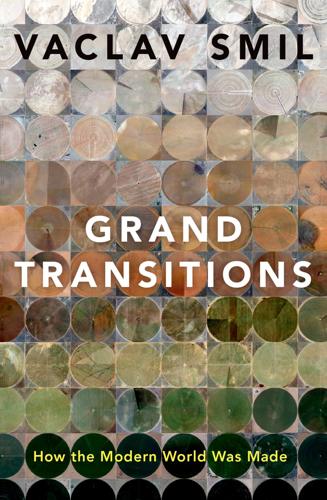
Grand Transitions: How the Modern World Was Made
by
Vaclav Smil
Published 2 Mar 2021
According to the US categorization, ready-mixed concrete and electroplating of metals count as parts of manufacturing but beneficiation of ores is a part of mining and “publishing and printing” are part of the information sector: a book is obviously a manufactured artifact but because its value “to the consumer lies in the information content, not in the format” (USCB 2018) it gets excluded. And a much more fundamental problem is the changing nature of modern manufacturing, as the sector depends on astute management; on just-in-time deliveries of parts and components coming in by trucks, ships, and airplanes; on efficient payroll and accounting; and, above all, on R&D activities that are necessary to update and to improve established designs and to introduce entirely new products in order to remain competitive in the global market.

The Diamond Age
by
Neal Stephenson
Published 2 May 2000
Just knowing it was in there gave him such an attitude that no one in his right mind would Rick with him, especially when they saw his Sights and the black leather. He got his way just by giving people the evil eye. It was time to move up the ladder. He sought work as a lookout. It wasn't easy. The alternative pharmaceuticals industry ran on a start, just-in-time delivery system, keeping inventories low so that there was never much evidence for the cops to seize. The stuff was grown in illicit matter compilers, squirreled away in vacant low-rent housing blocks, and carried by the runners to the actual street dealers. Meanwhile, a cloud of lookouts and decoys circulated probabilistically through the neighborhood, never stopping long enough to be picked up for loitering, monitoring the approach of cops (or cops' surveillance pods) through huds in their sunglasses.

Energy and Civilization: A History
by
Vaclav Smil
Published 11 May 2017
The availability of reliable and cheap electricity has transformed virtually every industrial activity. By far the most important effect on manufacturing was the widespread adoption of assembly lines (Nye 2013). Their classic, and now outdated, rigid Fordian variety was based on a moving conveyor introduced in 1913. The modern, flexible Japanese kind relies on just-in-time delivery of parts and on workers capable of doing a number of different tasks. The system, introduced in Toyota factories, combined elements of American practices with indigenous approaches and original ideas (Fujimoto 1999). The Toyota production system (kaizen) rested on continuous product improvement and dedication to the best achievable continuous quality control.

Basic Economics
by
Thomas Sowell
Published 1 Jan 2000
A company manufacturing television sets in China might not be as efficient in transporting those sets as a specialized transport enterprise would be, but at least they were less likely to damage their own TV sets by handling them roughly in transit. One of the other side effects of unreliable deliveries has been that Chinese firms have had to keep more goods in inventory, foregoing the advantages of “just in time” delivery practices in Japan, which reduce the Japanese firms’ costs of maintaining inventories. Dell Computers in the United States likewise operates with very small inventories, relative to their sales, but this is possible only because there are shipping firms like Federal Express or UPS that Dell can rely on to get components to them and computers to their customers quickly and safely.

The Wealth and Poverty of Nations: Why Some Are So Rich and Some So Poor
by
David S. Landes
Published 14 Sep 1999
Now they were listening.31 So the American industry is poised today between old ways and new. The big auto makers are relying more than before on parts suppliers, within and without the enterprise, to do much of the component assembly, in effect pushing the burden back à la japonaise and holding their wage bill down. To keep inventories lean, they are demanding just-in-time deliveries, some of them at twenty-minute intervals. Some affiliated partsmakers are now working for outside car makers as well as for the mother assembly plant, thereby maximizing the rate of utilization. Come a strike against the parent company, should the workers in the plant continue to produce for competitors?